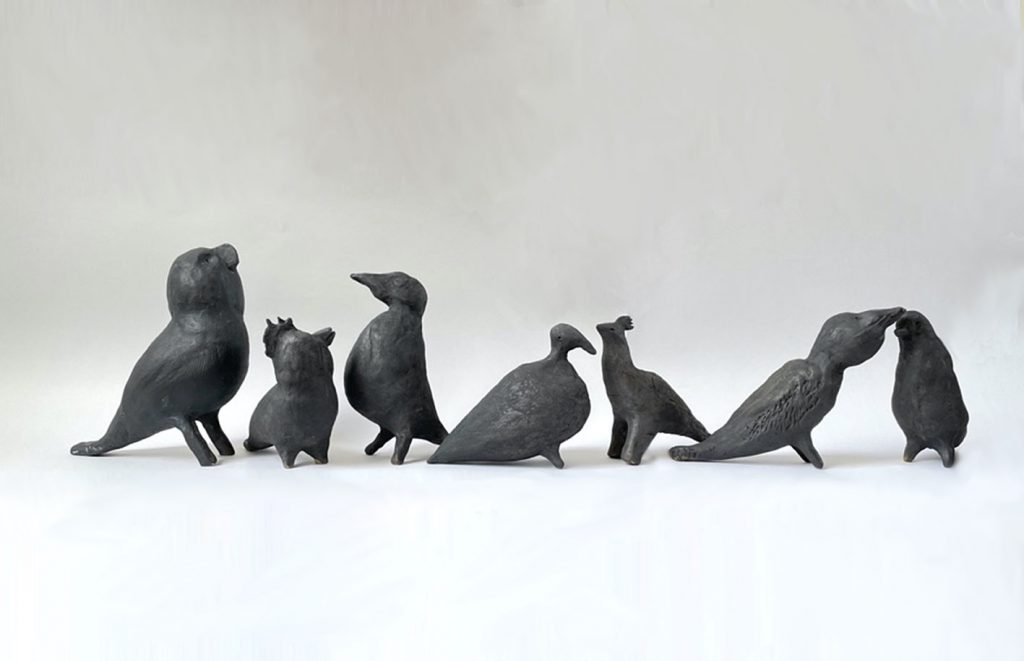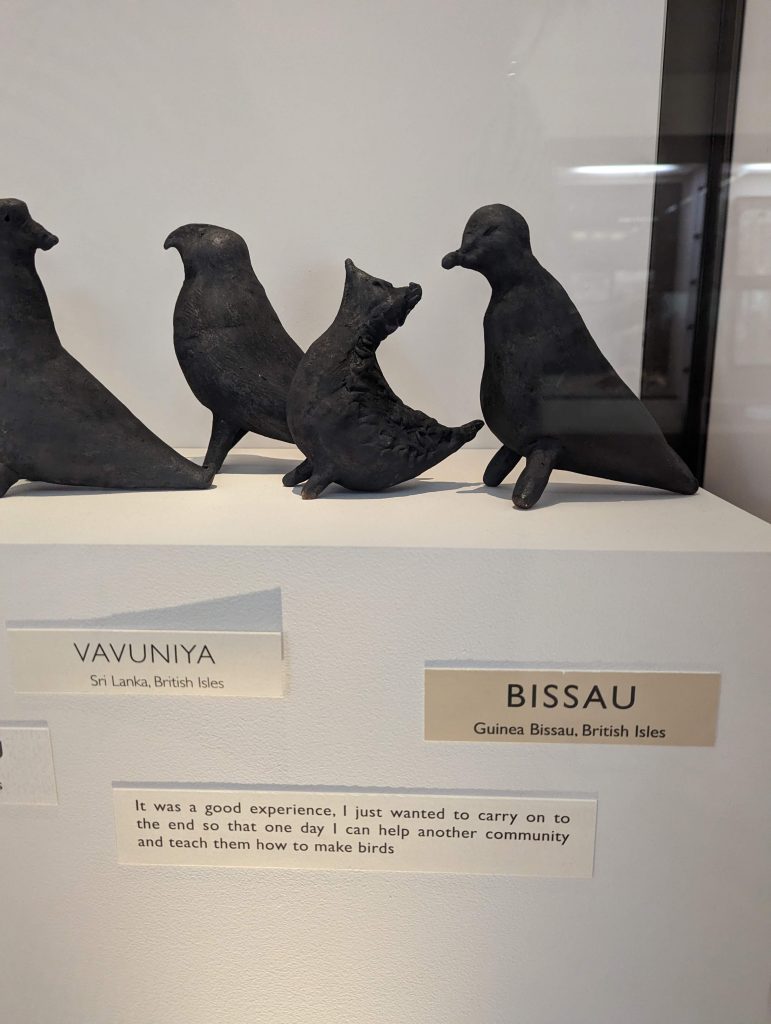Hi Julie, can you tell us about Flock Project?
My exhibition, in which I filled a room in an Edwardian flat in Brighton with 100 ceramic birds, grew into the Flock project. It was inspired by the starling murmurations that occur in the winter months, where resident and migrating birds form incredible shapes in the sky to ward off predators just before they roost for the night.
With my group of birds I discovered that I had created a community and that viewers of the installation connected with them. The birds were positioned so as to highlight relationships within the group. The next step became evident, to teach people who had migrated to the UK to make a bird in clay that would become part of a larger installation.
I believed that making in clay could have benefits both individually and for the group. The saying ‘the whole is greater than the sum of its parts’ became a mantra for the project. The activities of the workshops added a personal dimension to the themes of the installation. There was no assurance that it would succeed.
Can you tell us about the use of birds in the display?
Birds are intriguing, have spiritual meanings and can be symbolic of freedom. They are also the most studied of species. Their movements and decreasing numbers indicate changes in the environment, the impacts of which are seen everywhere.
During the workshops we discussed the ubiquitous pigeon, found in cities all over the world. Despite being one of the most successful and intelligent of birds, possessing navigational skill that humans still don’t quite understand, the species often has a negative image. It felt predestined to discover that the Horniman has a display cabinet devoted to the evolution and domestication of the humble pigeon.

What was it like working with the Grounding Project?
After initial scepticism from the members that they would be able to sculpt birds in clay, they took to it immediately. The subject matter was one that the group could engage with and we looked at reference images of birds which highlighted the immense diversity within the species. We explored the subject and soon people were sharing images they had taken close to where they lived as well as sharing stories from the homes they had left behind. I was astonished by the birds they created, so full of character with wonderful variations of form. The enthusiasm of the group surpassed my expectations.
You’ve displayed the sculptures with labels in the style of those already in the Natural History Gallery – can you tell us about this choice?
When I first visited the Horniman I was drawn to the cabinets of taxidermy birds and the labels that state their migration paths. These labels use Gil Sans typeface which places them, historically, to a time of discovery, when people didn’t travel in the way they do now and the Museum would have been the only insight into the natural world. The labels represent our ever changing planet and for the display I have used them to outline the place of birth of the makers, who have eventually settled in the British Isles.

What do you want people to take away from the display?
The display explores the themes of migration, nature, creativity, community and museums. Through Flock Project I have hoped to make connections between these themes. The creativity of the ceramic birds on display inspired me to make studies in the form of pen drawings, small marks that make up a larger image. The more I have observed the flock, the more each bird has grown in importance and relevance. I hope that people feel a sense of connectedness.
What’s next for Flock Project and for yourself?
I am in discussions for the next iteration of Flock, and am exploring the possibility of Flock Project leaving London, perhaps travelling to the coast, which inspires much of my ceramic work.


